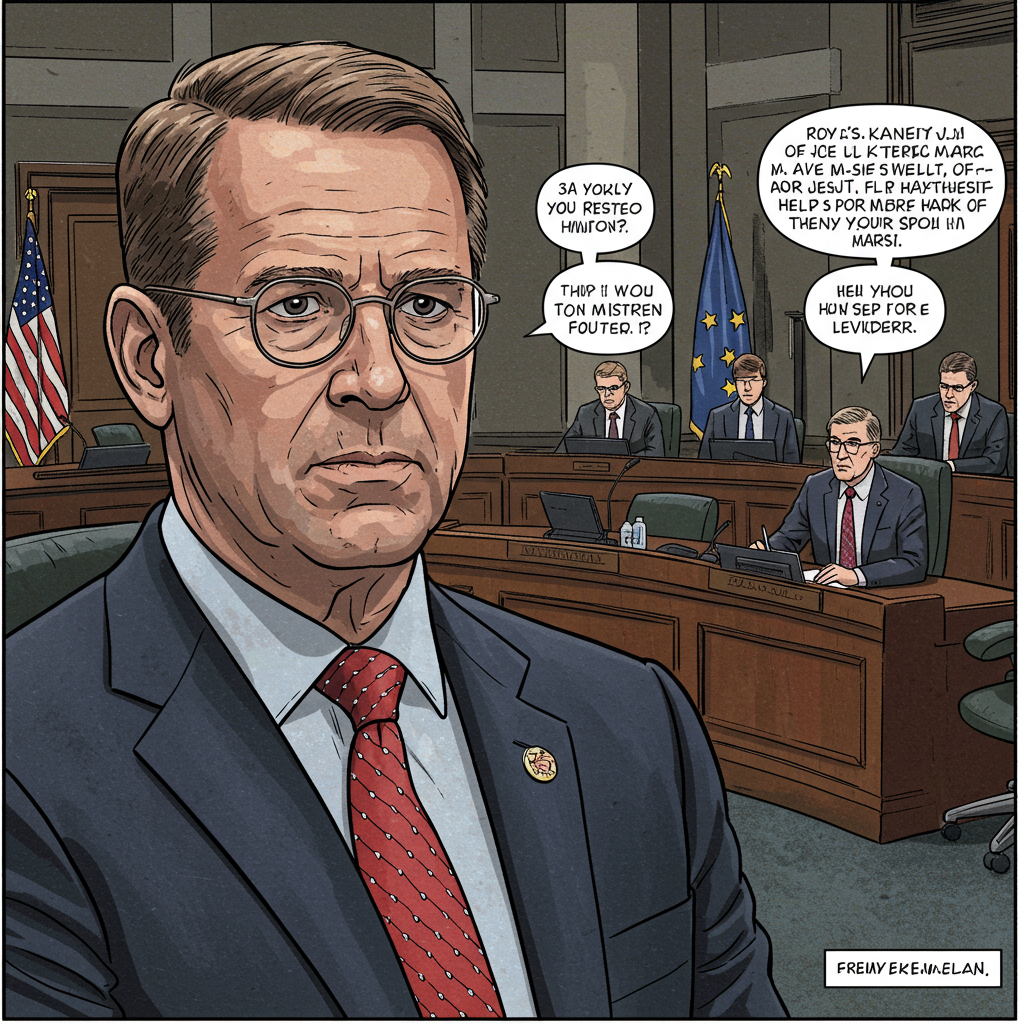For over a decade, the brics group of nations has discussed creating a unified system for cross-border payments using their own local currencies. The ambition is clear: reduce reliance on the U.S. dollar and major Western financial channels. Yet, despite repeated summit discussions and declared intentions, this vision remains largely unrealized. The recent BRICS meeting in Brazil highlighted this persistent challenge, with leaders again deferring concrete action while committing to more talks on trade integration. This lack of tangible progress raises questions about the viability of a unified BRICS financial architecture and its potential impact on the global economic landscape.
The BRICS Bloc’s Ambition: Why Local Currencies?
The BRICS bloc, initially comprising Brazil, Russia, India, China, and South Africa, and recently expanded to include other nations like Egypt, Ethiopia, Iran, Saudi Arabia, and the UAE, represents a significant portion of the world’s population and economic output. These nations share a desire to reshape the global financial system, which they often view as overly centered on the U.S. dollar and dominated by Western institutions.
Reducing Reliance on Dominant Currencies
A primary driver behind the local currency push is the desire to mitigate risks associated with using the U.S. dollar for international trade and investment. Geopolitical tensions, particularly the use of financial sanctions, have underscored the vulnerabilities of being heavily dependent on the dollar and payment systems like SWIFT. By trading in their own currencies, BRICS members aim to reduce exposure to external financial pressures and enhance their economic sovereignty. This strategy aligns with broader global discussions around de-dollarization, although the BRICS effort specifically targets intra-bloc transactions.
Boosting Intra-Bloc Trade Efficiency
Facilitating trade directly in local currencies could potentially streamline transactions between member states. It could reduce conversion costs, minimize exchange rate risks (though new risks specific to bilateral rates might emerge), and potentially bypass intermediaries. A more efficient payments system could theoretically boost trade and investment flows within the expanded 10-nation bloc, fostering deeper economic ties. This aligns with the bloc’s goal of greater trade integration, as mentioned in recent summit statements.
A Decade in Discussion: Tracing the BRICS Payment Push
Discussions around reducing dollar reliance and fostering local currency trade within BRICS are not new. They trace back over ten years, evolving through various proposals and initiatives.
Early Ideas and the New Development Bank
Early talks involved ideas around creating a shared reserve currency or basket of currencies. The establishment of the New Development Bank (NDB), headquartered in Shanghai, was a significant step towards creating an alternative financial institution. While the NDB focuses on infrastructure and sustainable development projects, often denominated in member currencies, it wasn’t designed as a direct payments system for general trade. The ambition for a broader payment architecture persisted alongside the NDB’s development.
Repeated Summit Discussions
Virtually every BRICS summit over the past decade has featured discussions on economic and financial cooperation, including the feasibility of local currency settlements and developing alternative payment mechanisms. Proposals have ranged from linking existing national payment systems to creating entirely new platforms. Despite these recurring agenda items, the concrete steps needed to build a functional, bloc-wide system have remained elusive. Statements often emphasize “exploring the potential” and “strengthening cooperation” rather than announcing completed infrastructure or implementation timelines.
Why the Delay? Major Obstacles to a BRICS Currency System
The persistent lack of a functional BRICS local currency payment system points to significant hurdles that have proven difficult to overcome. These challenges are complex, spanning economic, technical, and political dimensions.
Economic Diversity and Coordination Issues
The BRICS member states represent a wide range of economic structures, levels of development, and monetary policies. Coordinating exchange rates, managing volatility between multiple currencies, and establishing fair conversion mechanisms are inherently difficult. Member states also have differing economic priorities and levels of engagement with the global financial system, making it hard to align on a single, unified approach that satisfies everyone.
Technical Hurdles and Capital Controls
Creating a shared payment infrastructure that can handle the volume and complexity of international trade requires sophisticated technology and interoperability standards. Integrating disparate national systems presents significant technical challenges. Furthermore, several BRICS nations maintain capital controls, which restrict the free movement of money across borders. These controls are often in place to manage financial stability but pose a fundamental obstacle to a seamless cross-border payment system designed for widespread use.
The Challenge of Trust and Liquidity
For businesses and individuals to use a new payment system, they need confidence in its reliability, security, and efficiency. Establishing such trust on a multilateral scale is difficult. Additionally, ensuring sufficient liquidity in all participating local currencies within the system is crucial. If there isn’t enough demand or supply of a particular BRICS currency outside its home country, settling transactions in that currency becomes impractical. Major global currencies like the dollar benefit from deep, liquid markets worldwide, a characteristic not shared equally among BRICS currencies.
The 2025 Summit: More Talks, Limited Breakthroughs
The BRICS summit in Rio de Janeiro in July 2025 provided the latest instance of this ongoing dialogue. While expectations might have included updates on financial architecture, the outcome underscored the continued challenges.
What Happened in Brazil?
Reporting from the summit confirmed that significant strides in establishing the long-discussed cross-border payments system using local currencies were once again not achieved. The focus remained on the potential rather than announcing operational readiness or a clear path forward with specific timelines. This reflects the persistent nature of the obstacles mentioned earlier.
Focus on Broader Trade Integration
Instead of a payments system breakthrough, the official statements from the Brazil meeting emphasized a commitment to “additional talks on the potential for greater trade integration” within the expanded bloc. While related to the overall goal of enhancing intra-BRICS economic ties, this signals a broader, perhaps less ambitious, focus compared to the technical challenge of creating a unified financial backbone. Trade integration involves many factors beyond just payments, including tariffs, customs procedures, and regulatory harmonization.
Implications of the Stalled Progress
The decade-long delay in creating a functional BRICS local currency payment system has several key implications for the bloc and the global financial system.
Continued Dollar Dominance
Perhaps the most significant implication is the continued reliance on the U.S. dollar for international trade and finance, even among BRICS members trading with each other. Without a viable alternative system, businesses default to established channels and currencies that are widely accepted and liquid. This perpetuates the dollar’s role as the dominant global reserve and transaction currency, despite the BRICS nations’ stated objectives.
Bilateral Deals Over Bloc-Wide Systems
While a unified BRICS system has stalled, some member states have pursued bilateral agreements to settle trade in their local currencies. For instance, China has increased yuan-denominated trade with partners like Russia and Brazil. India has explored rupee trade mechanisms. These bilateral arrangements demonstrate the underlying desire for local currency use but highlight the difficulty in scaling such efforts to a multilateral, bloc-wide level. They are incremental steps rather than a systemic shift.
Looking Ahead: Can BRICS Overcome the Challenges?
Despite the decade of limited progress, the ambition within BRICS to reduce dollar reliance and boost internal financial integration persists. Overcoming the challenges will require sustained political will, significant investment, and innovative solutions.
Potential Pathways and Digital Solutions
One potential pathway could be a more gradual, incremental approach, perhaps starting with a limited number of currencies or specific types of transactions. Another area of focus could be leveraging digital currencies. Discussions around central bank digital currencies (CBDCs) and their potential for cross-border use are ongoing globally. A BRICS-focused digital currency platform, or an interoperability framework for national CBDCs, could potentially bypass some of the complexities of traditional systems and capital controls, though this path also presents its own technical and governance challenges.
Frequently Asked Questions
What is the main goal of BRICS regarding local currencies?
The core goal of the BRICS nations concerning local currencies is to establish a system for settling trade and investment transactions between member states without relying on the U.S. dollar or other major international currencies. This aims to reduce vulnerability to external sanctions, lower transaction costs, and boost intra-bloc trade efficiency.
Why has the BRICS local currency payment system taken so long to develop?
The development has faced significant obstacles over the past decade. Key challenges include the economic diversity among member states, technical complexities in linking disparate financial systems, the presence of capital controls in some nations, and difficulties in establishing trust and ensuring sufficient liquidity for all participating local currencies on a multilateral platform.
Does the lack of a BRICS currency system impact global de-dollarization efforts?
Yes, the lack of a functional, bloc-wide BRICS local currency payment system significantly limits the practical impact of the bloc on global de-dollarization narratives. While some bilateral local currency trade is increasing between member states, the absence of a unified, scalable alternative for the entire bloc means that the U.S. dollar continues to dominate international trade and finance for most transactions, even those involving BRICS nations.
Conclusion: The Road Ahead for BRICS Financial Integration
The aspiration within BRICS for a unified local currency payment system is a strategic response to the realities of the current global financial architecture. It reflects a desire for greater economic autonomy and a shift towards a more multipolar financial world. However, the past decade has demonstrated that ambition alone is insufficient. The technical, economic, and political hurdles are substantial. The outcome of the 2025 summit in Brazil, which reiterated a commitment to further discussions rather than announcing a breakthrough, underscores that this decade-old push remains a long-term project facing significant headwinds. While bilateral local currency trade may grow, a comprehensive, bloc-wide BRICS payment system capable of fundamentally altering global currency dynamics still appears to be a distant prospect. The path to deeper BRICS financial integration is complex and likely involves incremental steps rather than a single, transformative project.
Word Count Check: ~1080 words



